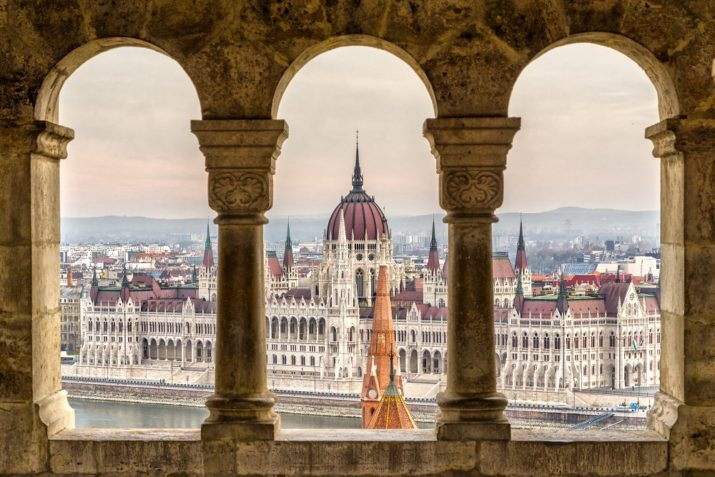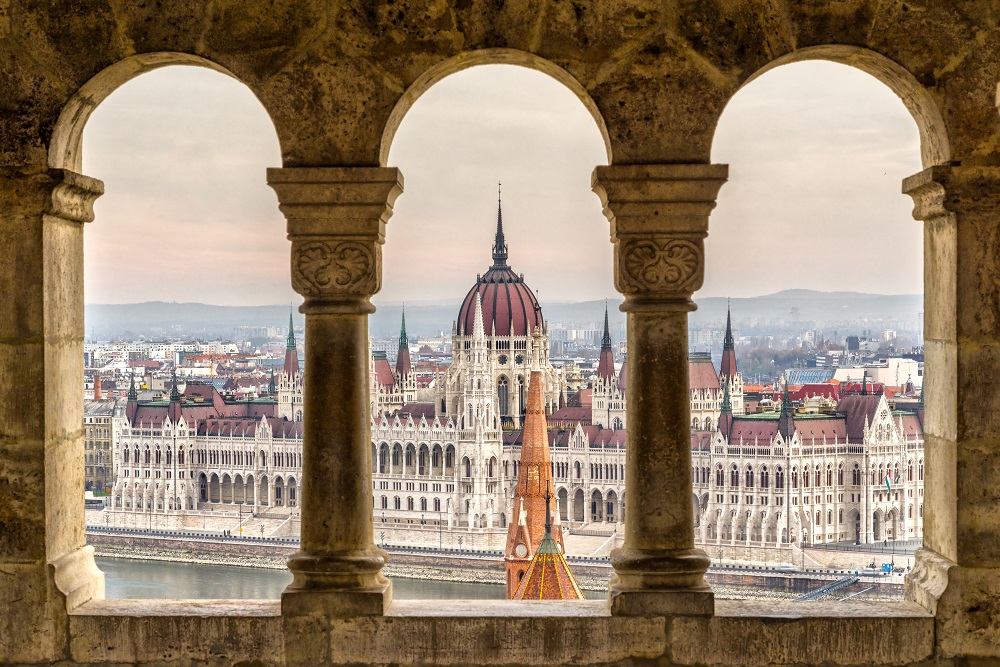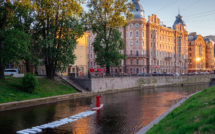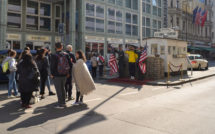

This is part of our special feature, Contemporary Urban Research in the European City.
Architecture and urbanism combine two separate but intimately linked worlds. On the one hand, they are design disciplines that revolve around aesthetics, representation and – though this may appear a bit strange – communication. On the other hand, they are planning disciplines that divide space in zones with specific uses that are connected by traffic – obviously this applies more to urbanism than to architecture, but even there the two components can easily be identified. These qualities explain why architecture and urbanism are simultaneously a perfect reflection of historical trends – according to Karl Schlögel, they sometimes document history much better than written sources – and superb works of art. This is what makes this field so incredibly interesting. While working on hospitals, I became fascinated by the impact of the Enlightenment. The philosophers of this movement believed that transformations in people’s physical and social environment were key to improving their lives – to make them happier. This made knowledge about the environment a moral imperative, and in the late eighteenth and early nineteenth centuries, the natural sciences and the humanities were seen as perfectly compatible tools to understand nature and the man-made world, the principal idea being that everything should be studied in a rational, scientific way. In architecture, this led to the scientific analysis of a building’s function – a way of thinking that introduced the concept of building types and typologies.
Only in the late eighteenth century, curing patients was identified as the primary function of hospitals, and the provision of clean air as the best tool to do so. This view was propagated by medical doctors and produced buildings in which medicine, paradoxically, only played a marginal role. In urbanism, the Enlightenment culminated in the ideal to transform buildings and cities into billboards of Enlightenment ways of thinking, and produced a specific iconography with neo-classicism as the preferred style, and various easily recognizable symbols (the palm tree, for instance). For the first time in history, the communicative potential of architecture and urbanism was fully exploited, ideally resulting in a perfectly designed, educational environment. Promoting education (“Bildung”), as well as questioning tradition, convention, and the power structures based on it, the Enlightenment ushered in a strain of thought that helped to transform society, introduce democracy. Although it occasionally derailed into a coercive system (dominated by allegedly enlightened elites, the reign of Robespierre and the early Soviet Union being the most extreme examples), there is little doubt that its overall impact has been positive.
Since times immemorial, cities have been seen as undisputed highlights of culture. In their urban structure and their building stock – especially their monuments – they also represent the historical evolution of society in every possible aspect. They are functional machines and representative devices that, ideally, use the entire repertory of artistic design. Metropolitan cities like Berlin, Moscow, and Budapest have witnessed long, continuous processes of expansion and transformation, and in all these cities, the impact of the successive political regimes has been immense. Now all of them face the consequences of neo-liberal policies that, to some extent, threaten their very existence as well-defined political and administrative units, as urban communities, and, consequently, as manifestations of specific identities. Cities are the envelope of the forces that help shape them; if they are reduced to local examples of a generic economic system driven by social media-based consumption, their culture becomes a consumer commodity that should attract people in order to spend money on the same products they would find everywhere else. Everywhere, gentrification and tourism have become epidemic, and although there are also positive effects, the negative consequences sometimes tend to dwarf them. All major cities face the challenge to reinvent themselves while escaping nationalism, provincialism and populism. They should cherish their history – especially their urban structures and monumental buildings – as the primary source for maintaining and strengthening their identity: those qualities that they alone possess had set them apart from all other cities.
Of course, these unique characteristics have always been made up of components that were, to some extent, generic and universal – the maxim that all history is world history also applies to architecture and urbanism, but does not threaten their potential to contribute to the emergence of unique cities. European history has been an interactive process that involved the entire continent including Russia; it has produced social, political and economic ideas that were never confined to only one nation – transnationalism is nothing new. Artistic concepts are deeply rooted in Europe’s history, and interaction in this domain may have been even more intense and direct than in politics and commerce. All European cities relate to this shared background, and the major centers have produced urban phenomena that spread across Europe and the world – the Berlin building code, the Budapest master plan (that inspired the American City Beautiful movement), the radical modern experiments in Moscow in the 1920s, etc. By default, nodes in international networks, it is difficult if not impossible to mark clear borders of an imaginary geographical area that contains the “European” city – rather, its “Europeanness” is a cloud that covers the entire planet, but, obviously, is most present in Europe and Russia. There, it is strongest where it produced characteristic urban identities over time, and weakest where generic, production and technology-based models took over – the post-war housing estates with their mass-produced flats are very similar in Moscow, Berlin, Budapest, Prague, Groningen Delft (as far as the basic principles are concerned). Thus, urban history can be seen as a continuous interactive process of juxtaposition, combining and reinterpreting generic models in unique ways.
Paradoxically, current neo-liberal practices often result in ambivalent situations. Within the global, hyper generic world of neo-liberalism, which promotes the same consumer goods and services in the same way all over the world, creating universally emulated lifestyles saturated with the same brands, tendencies occur that seem to break away from its inherent universalism. Writing about Berlin or Budapest, for instance, historians should be aware of the trends to “nationalize” its history – capital cities are particularly to suffer from political agendas, and it would be naive to assume that in our global society this is no longer so. The demolition of the Palast der Republik was a political act that – although its advocates claim the opposite – cannot be related to its design qualities, nor to its physical condition. It is an attempt to erase part of the city’s history: symbolizing the heritage of the GDR, it should go. The ambition to eliminate an entire layer of the city’s past represents the views of a powerful elite and reverberates in other intellectual circles as well; the now abandoned idea, for instance, to found a museum next to Checkpoint Charlie in commemoration of America’s victory in the Cold War (which never happened: the collapse of the Soviet Empire was entirely motivated by internal problems). Strolling around the buildings of parliament in Budapest, tourists will see a statue of Ronald Reagan (not far from the monument that shows Nagy Imre, the leader of the 1956 rebellion, standing on a bridge). What is Reagan doing here? He charges a segment of Budapest’s public space in an area that is heavily politicized already with a clear message: thanks to Reagan’s armament policies, the Soviet Union had to give up its claims to future world domination, and thus lost the Cold War. Nonsense, obviously, but a message politicians in Hungary want their citizens to believe. In Berlin, within a few months, the site of the Palast der Republik will be occupied by a reconstruction of the Stadtschloß that was dynamited by the communist in the late 1940s; it is presented as a historical monument, albeit a brand new one. (Paradoxically, this perception reflects debates in the world of heritage specialists, where some experts claim that heritage values are linked to design ideas, not to their material manifestation – a view that, apparently, justifies the reconstruction of demolished monuments in many European countries, especially in Central and Eastern Europe.) Projects like the Stadtschloß reconstruction appear to complement the city’s history as a powerful marketing tool – bookshops targeting tourists are full of books on the Nazi period, the GDR episode and the Berlin wall, and now the repertory seems to be expanded to earlier phases as well (the “roaring twenties,” for instance). The city’s unique historical experiences are key to understand its success as a tourist magnet. Monuments, buildings and historical sites play a remarkable role: they visualize history. Of course, there is nothing wrong with that: it demonstrates their communicative powers, their potential to visualize history, and sometimes they combine this power with unique artistic qualities. Things become problematic, however, as soon as buildings and urban ensembles are integrated in contemporary political campaigns that attribute values that may run counter to historical realities, invent fake histories, and even rebuild monuments to support their views – views that, from a historical point of view, are as artificial as the reconstructed Stadstschloß.
What does all this imply for the historical sciences? For urban historians, historians and theoreticians of architecture and urbanism, and other disciplines working in this field? Writing history presupposes the culmination of its findings in a growing “body of knowledge.” Current publication processes have made this processes of accumulation even more self-contained than before, making the most urgent and difficult task urban scholars now face even more problematic: the deconstruction of the body of knowledge that emerged since the 1950s, when the Cold War divided the world, when, for a time, architectural styles were intimately linked to political ideologies, and when the perception of Europe’s geography was redefined (designating formerly central areas as peripheries, for instance). Looking at primary sources and hard facts, much of the accepted views do not seem to correspond to historical realities. Rewriting history, therefore, has become more urgently needed than ever before, but also more difficult. (One of the reasons for the critical reconstruction of canonized histories is that it is the only way to accumulate the scientific credibility to address current uses and abuses of our urban heritage.) However, although the differences between historical realities and the sanctioned histories may very well be bigger when European cities are the topic, there is no such thing as a European approach to urban history (other than the topics): as all scientific endeavors, urban history should not be stained by national and local frameworks and agendas. Historians should do what they are expected to do anyway: be hypercritical about the uses and abuses of history, and – especially in the case of architectural and urban monuments – clearly distinguish between artistic values, which reflect the evolution of the arts, documentary values, which refer to historical facts and events, and the use as arguments in contemporary political and cultural debates.
Cor Wagenaar studied political history under Professor Isaac Lipschits before specializing in the history and theory of architecture and urbanism. Within that field, he specialized in urbanism, and on the interaction of architecture, urbanism and health. HIs PhD thesis analyzed the wartime and post-war reconstruction of the city of Rotterdam; in 2011 his work on urbanism culminated in Town Planning in the Netherlands. Responses to Enlightenment Ideas and Geopolitical Realities. In 2001 he joined the University Medical Center of Groningen where he organized an international conference on the architecture of hospitals, a topic he has worked on since 1995 (the most recent book this field: Hospitals. A Design Manual, published by Birkhäuser). He works at Delft University of Technology and the University of Groningen, where he was appointed Thomassen a Thuessink Professor on the topic Architecture, Urbanism and Health in 2014, and full professor in the history and theory of architecture and urbanism in 2016. He lives and works in Groningen and Berlin.
Photo: Budapest, Parliament view through Fishermans Bastion, Hungary ny Luciano Mortula | Shutterstock
Published on May 1, 2018.




